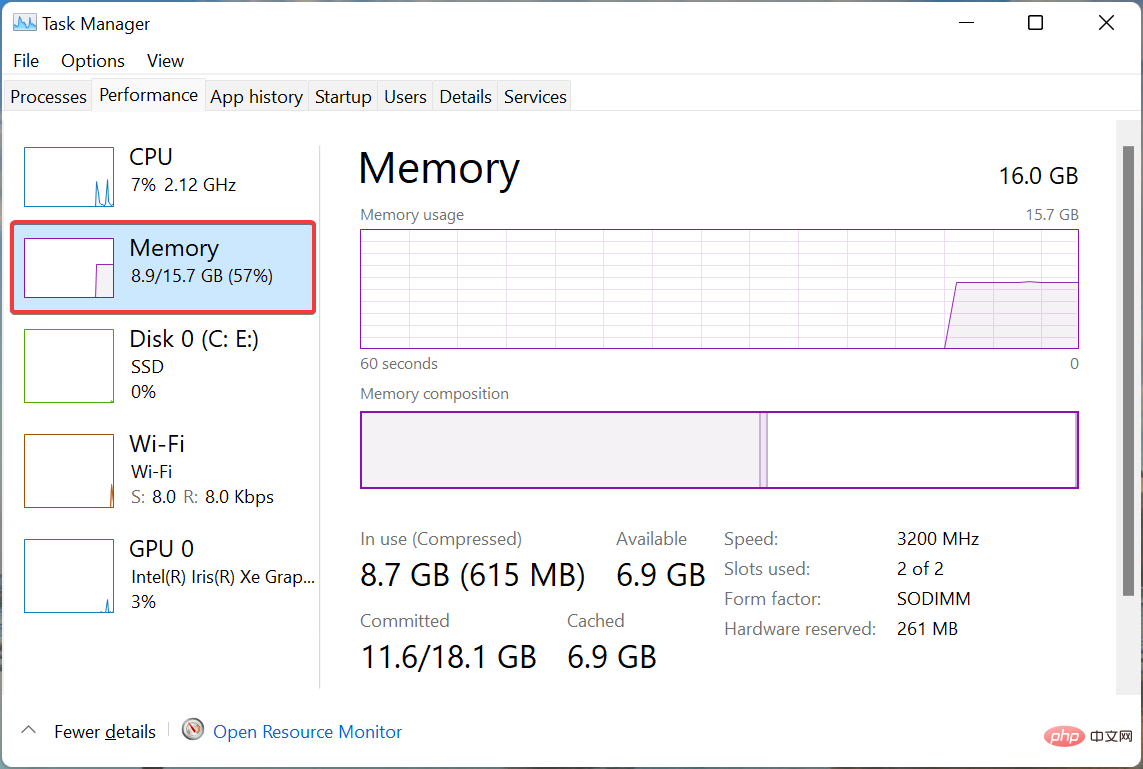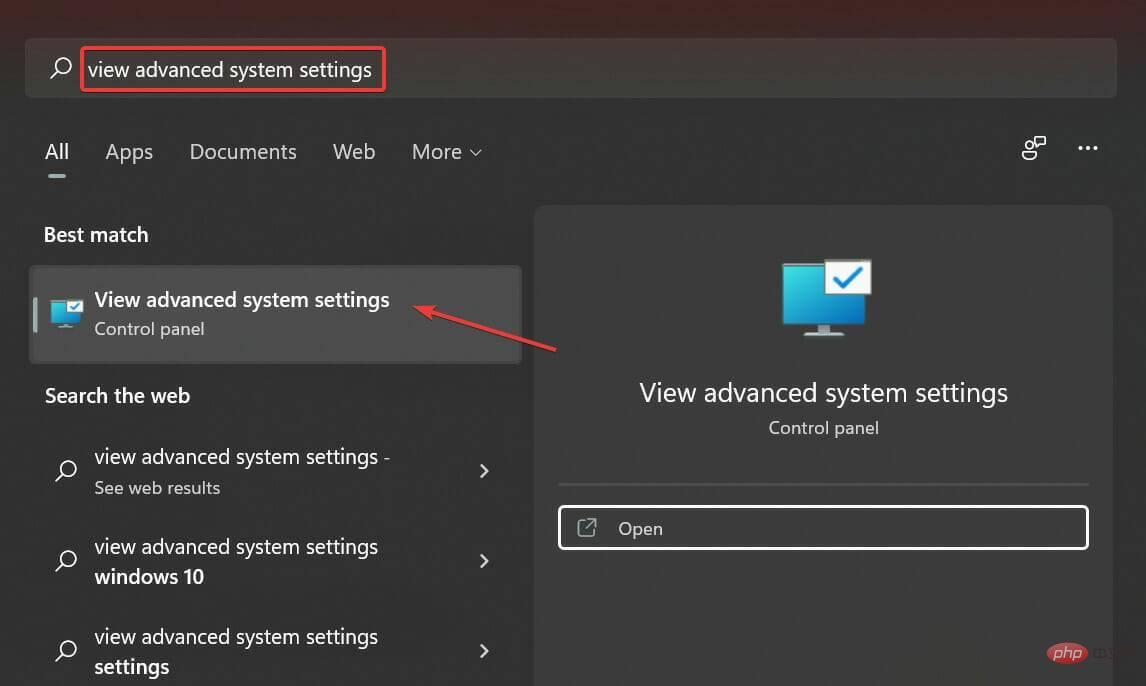
Java development: How to perform memory management and object pool optimization
Background
In Java development, memory management and object pool optimization are very important topics. Effectively managing memory and optimizing object pools can improve application performance and scalability. This article will introduce how to perform memory management and object pool optimization, and provide specific code examples.
1. Memory management
- Avoid creating too many objects
In Java, creating objects requires allocating memory space. Frequent creation and destruction of objects will lead to frequent allocation and recycling of memory, increasing the overhead of memory management. Therefore, we should try to avoid unnecessary object creation. Here are a few ways to avoid object creation:
- Use primitive types instead of wrapped types: Operations on primitive types are more efficient than wrapped types. For example, use int instead of Integer.
- Use StringBuilder or StringBuffer instead of String for string operations: This can avoid creating a large number of intermediate string objects.
- For objects in a loop, consider extracting the object outside the loop to avoid creating the object in each loop.
- Release unused objects in a timely manner
The garbage collection mechanism in Java will automatically recycle objects that are no longer used, but the triggering of the garbage collection mechanism is controlled by the JVM and Not always in a timely manner. Therefore, we can manually release objects that are no longer used to reclaim memory in a timely manner. The following are several ways to manually release objects:
- Use null assignment: When an object is no longer used, its reference can be assigned null to notify the garbage collection mechanism that the object can be recycled. The memory space of the object.
- Use the System.gc() method: Calling the gc() method of the System class can actively trigger the garbage collection mechanism.
- Using weak references and soft references
Java provides weak references and soft references to manage the life cycle of objects. Using weak references and soft references allows objects to be reclaimed by the garbage collection mechanism when memory is insufficient. The following are several scenarios for using weak references and soft references:
- Objects in the cache: For objects in the cache, soft references can be used to manage them. When there is insufficient memory, the JVM can Recycle these objects.
- Listener: For some listeners, weak references can be used to manage them. When the listening object is no longer referenced, the resources can be automatically released.
2. Object pool optimization
Object pool is a technology that reuses objects, which can reduce the cost of creating and destroying objects and improve performance and scalability.
- Implementation method of object pool
Object pool can be implemented by manually managing objects or using a third-party library. The following are several common object pool implementation methods:
- Manual implementation: Object pools can be implemented using data structures such as arrays, linked lists, or queues. When an object is needed, it is obtained from the object pool; when it is finished, the object is put back into the object pool.
- Using Apache Commons Pool: Apache Commons Pool is a very popular open source object pool library that can be used to implement object pooling.
- Application scenarios of object pool
Object pool is very suitable in the following scenarios:
- Database connection pool: for the creation of database connections And destruction is very resource-consuming. Using an object pool can avoid frequent creation and destruction of connection objects.
- Thread pool: For scenarios where threads are frequently created and destroyed, thread pools can be used to reuse thread objects and improve performance and scalability.
- Http connection pool: For scenarios with frequent Http requests, using the Http connection pool can avoid frequent creation and closing of connections.
- Object reuse: For some objects that need to be created and destroyed frequently, using an object pool can avoid frequent creation and destruction overhead.
Code Example
The following is an example of using Apache Commons Pool to implement an object pool:
class ConnectionFactory {
public Connection createConnection() {
// 创建连接
return new Connection();
}
public void closeConnection(Connection conn) {
// 关闭连接
}
}
class Connection {
// 连接对象
public void doSomething() {
// 执行操作
}
}
class ConnectionPool {
private GenericObjectPool<Connection> pool;
public ConnectionPool() {
ConnectionFactory factory = new ConnectionFactory();
pool = new GenericObjectPool<>(factory);
// 设置对象池的配置
pool.setMaxTotal(10);
pool.setMaxIdle(5);
// 其他配置...
}
public Connection getConnection() {
try {
return pool.borrowObject();
} catch (Exception e) {
// 处理异常
}
return null;
}
public void releaseConnection(Connection conn) {
try {
pool.returnObject(conn);
} catch (Exception e) {
// 处理异常
}
}
}
class Main {
public static void main(String[] args) {
ConnectionPool pool = new ConnectionPool();
Connection conn1 = pool.getConnection();
conn1.doSomething();
pool.releaseConnection(conn1);
Connection conn2 = pool.getConnection();
conn2.doSomething();
pool.releaseConnection(conn2);
// 其他操作...
}
}This article introduces how to perform memory management and object pool optimization, and provides specific code example. Through reasonable memory management and optimized object pools, the performance and scalability of Java applications can be effectively improved. In actual development, different methods can be used to optimize the performance of memory management and object pools according to specific circumstances.
The above is the detailed content of Java development: How to perform memory management and object pool optimization. For more information, please follow other related articles on the PHP Chinese website!
 如何解决C++开发中的内存碎片问题Aug 22, 2023 am 09:15 AM
如何解决C++开发中的内存碎片问题Aug 22, 2023 am 09:15 AM如何解决C++开发中的内存碎片问题在C++开发中,内存碎片问题是一个常见而又麻烦的问题。内存碎片指的是已分配的内存块在使用过程中出现断开的情况,导致可分配的连续内存空间变少,从而影响程序的性能和稳定性。本文将介绍一些解决C++开发中内存碎片问题的常见方法和技巧。一、减少动态内存分配次数动态内存分配是导致内存碎片的常见原因之一。为了减少动态内存分配的次数,可以
 如何在 Windows 11 中增加虚拟内存(页面文件)May 13, 2023 pm 04:37 PM
如何在 Windows 11 中增加虚拟内存(页面文件)May 13, 2023 pm 04:37 PM如果您在运行高端应用程序或游戏时注意到一定的延迟,则可能是RAM/内存通常运行已满。这是增加Windows11中的虚拟内存或页面文件大小的地方。虚拟内存或页面文件是最容易被误解的概念之一,围绕它有很多神话。无论其他人说什么或做什么,都必须彻底了解如何从您的计算机中获得最佳性能。在以下部分中,我们将引导您完成在Windows11中增加虚拟内存的步骤,帮助您了解其重要性以及最佳虚拟内存大小。为什么需要虚拟内存?页面文件或虚拟内存基本上是用作RAM的硬盘的一部分。当内存已满且无法存储更多数据时
 如何在 Windows 11 中重置虚拟内存(页面文件)?Apr 13, 2023 pm 11:28 PM
如何在 Windows 11 中重置虚拟内存(页面文件)?Apr 13, 2023 pm 11:28 PM如果您的计算机没有足够的 RAM 或总是满的,您可以依靠虚拟内存从物理内存中卸载非活动文件。但是,如果这不太顺利,您可能需要在 Windows 11 中重置虚拟内存。我们经常看到我们的计算机滞后,最可能的情况是Windows 11 中的高 RAM 使用率。有很多方法可以降低 RAM 消耗,但这可能会影响您的体验。而且,这就是虚拟内存可以提供帮助的地方。有时需要在 Windows 11 中重置虚拟内存,因此,必须正确理解该概念和过程,我们在以下部分中进行了讨论。虚拟内存是如何工作的,为什么我需要重
 Windows 11 停止代码内存管理:7 个修复May 04, 2023 pm 11:34 PM
Windows 11 停止代码内存管理:7 个修复May 04, 2023 pm 11:34 PM如果您的PC出现内存管理错误,您需要查看这些Windows11停止代码内存管理修复程序。如果您的系统崩溃并出现蓝屏或BSOD,您可能已经看到了Windows11停止代码内存管理错误。它将在屏幕上显示MEMORY_MANAGEMENT,表明系统内存管理存在问题。例如,它可能(或可能不)伴随着停止代码,如0x0000001A。有时您可以通过基本重启来解决错误,但它通常涉及额外的故障排除步骤。如果您在Windows11PC上遇到错误,请应用以下修复程序并运行扫描以使您的系统重新启动并运
 Java开发如何提升图片处理效能?Jun 30, 2023 pm 02:09 PM
Java开发如何提升图片处理效能?Jun 30, 2023 pm 02:09 PM随着互联网的快速发展,图片处理在各种应用中扮演着重要的角色。而对于Java开发者来说,如何优化图片处理的性能是一个不可忽视的问题。本文将介绍一些优化图片处理性能的方法。首先,对于Java开发中的图片处理,我们可以考虑使用专门的图片处理库,例如JAI(JavaAdvancedImaging)和ImageIO。这些库提供了丰富的图片处理功能,并且经过了优化,
 如何处理Linux系统中出现的系统内存不足问题Jun 29, 2023 pm 12:13 PM
如何处理Linux系统中出现的系统内存不足问题Jun 29, 2023 pm 12:13 PM如何处理Linux系统中出现的系统内存不足问题摘要:Linux系统是一种稳定性强、安全性高的操作系统,但有时候会遇到系统内存不足的问题。本文将介绍一些常见的处理方法,帮助用户解决这一问题。关键词:Linux系统、系统内存、不足、处理方法正文:引言Linux系统作为一种开源的操作系统,被广泛应用于各种服务器和嵌入式设备中。然而,有时候我们会发现在运行过程中,系
 PHP中的内存管理和垃圾回收技术May 11, 2023 am 08:33 AM
PHP中的内存管理和垃圾回收技术May 11, 2023 am 08:33 AMPHP作为一种广泛使用的脚本语言,为了在运行时保证高效执行,具有独特的内存管理和垃圾回收技术。本文将简单介绍PHP内存管理和垃圾回收的原理和实现方式。一、PHP内存管理的原理PHP的内存管理采用了引用计数(ReferenceCounting)来实现,这种方式是现代化的语言中比较常见的内存管理方式之一。当一个变量被使用时,PHP会为其分配一段内存,并将这段内
 PHP如何实现高性能的内存管理,提升网站效率Jun 27, 2023 pm 03:56 PM
PHP如何实现高性能的内存管理,提升网站效率Jun 27, 2023 pm 03:56 PM对于一个网站来说,性能是至关重要的。其中,内存管理是一个非常关键的因素。PHP作为一种广泛使用的编程语言,也面临着内存管理方面的挑战。本篇文章将会介绍PHP如何实现高性能的内存管理,以提升网站的效率。一、了解PHP内存管理机制在了解如何实现高性能的内存管理之前,我们需要先了解PHP的内存管理机制。PHP对内存的使用是通过堆和栈来实现的。堆内存用于存储动态分配


Hot AI Tools

Undresser.AI Undress
AI-powered app for creating realistic nude photos

AI Clothes Remover
Online AI tool for removing clothes from photos.

Undress AI Tool
Undress images for free

Clothoff.io
AI clothes remover

AI Hentai Generator
Generate AI Hentai for free.

Hot Article

Hot Tools

SAP NetWeaver Server Adapter for Eclipse
Integrate Eclipse with SAP NetWeaver application server.

MinGW - Minimalist GNU for Windows
This project is in the process of being migrated to osdn.net/projects/mingw, you can continue to follow us there. MinGW: A native Windows port of the GNU Compiler Collection (GCC), freely distributable import libraries and header files for building native Windows applications; includes extensions to the MSVC runtime to support C99 functionality. All MinGW software can run on 64-bit Windows platforms.

VSCode Windows 64-bit Download
A free and powerful IDE editor launched by Microsoft

MantisBT
Mantis is an easy-to-deploy web-based defect tracking tool designed to aid in product defect tracking. It requires PHP, MySQL and a web server. Check out our demo and hosting services.

mPDF
mPDF is a PHP library that can generate PDF files from UTF-8 encoded HTML. The original author, Ian Back, wrote mPDF to output PDF files "on the fly" from his website and handle different languages. It is slower than original scripts like HTML2FPDF and produces larger files when using Unicode fonts, but supports CSS styles etc. and has a lot of enhancements. Supports almost all languages, including RTL (Arabic and Hebrew) and CJK (Chinese, Japanese and Korean). Supports nested block-level elements (such as P, DIV),






